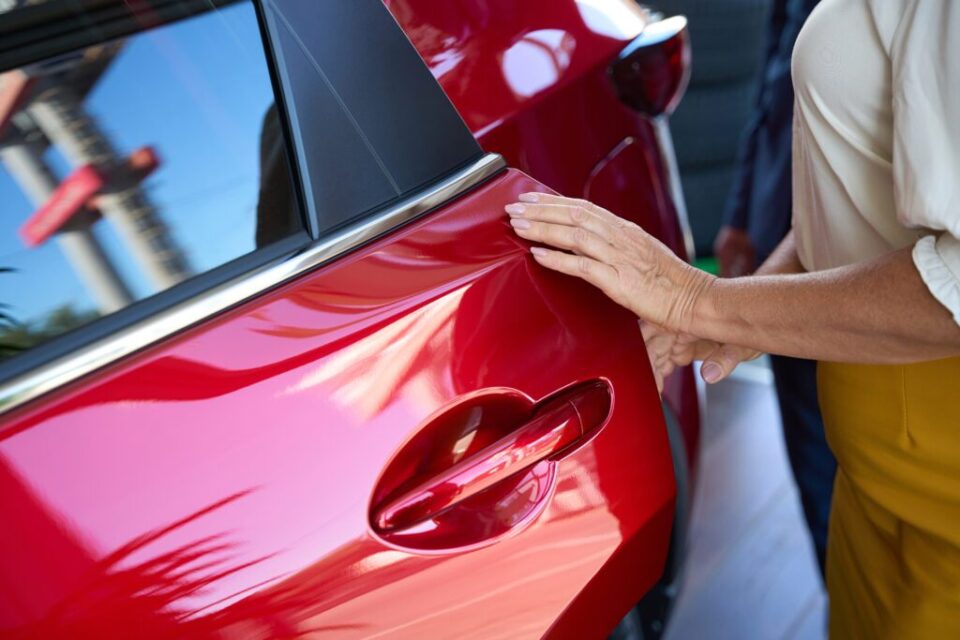Advancements in technology have revolutionized the automotive repair industry, especially when it comes to fixing dents and hail damage. From specialized tools to advanced imaging systems, modern dent repair methods prioritize precision, efficiency, and quality results. These innovations have not only improved repair techniques but have also enhanced customer satisfaction by reducing repair times and costs.
Traditional vs. Modern Dent Repair
In the past, repairing dents involved labor-intensive processes such as sanding, filling, and repainting. While effective, these methods were time-consuming, costly, and often left visible imperfections. Today, modern techniques like Paintless Dent Repair (PDR) have transformed the industry by providing a less invasive and more efficient solution.
PDR eliminates the need for repainting or using fillers, restoring the original finish of the vehicle. This breakthrough technique, combined with cutting-edge tools, sets a new standard for dent repair.
Technological Innovations in Dent Repair
The integration of advanced technology into dent repair has brought about several game-changing innovations:
1. PDR Tools
Paintless Dent Repair relies on a variety of precision tools specifically designed to massage dents from the inside of a vehicle panel. These tools allow technicians to reshape the metal without affecting the paint, offering unmatched accuracy compared to traditional methods.
2. LED and Fluorescent Lighting

Specialized lighting systems are a cornerstone of modern dent repair. LED and fluorescent lights create reflections on the vehicle’s surface, highlighting even the smallest imperfections. This ensures no damage goes unnoticed and helps technicians achieve flawless results.
3. Digital Imaging Systems
Advanced imaging technology allows technicians to assess dents in remarkable detail. These systems provide highly accurate repair estimates, improving transparency for customers and aiding in insurance claims. Digital imaging also helps technicians develop tailored repair plans.
4. 3D Scanning and Printing
Some repair shops have embraced 3D scanning to create digital models of damaged areas. These models can be used to print custom tools or parts, streamlining the repair process. For complex repairs, 3D printing offers precision and efficiency unmatched by traditional methods.
5. Automated Quality Control
Computerized systems are increasingly used for quality control. These systems ensure that repairs meet manufacturer specifications, maintaining the safety and integrity of the vehicle. Automated checks also reduce the risk of human error during the repair process.
Benefits of Technology-Driven Repairs
The incorporation of advanced technology into dent repair brings numerous advantages for both vehicle owners and repair shops:
- Precision: Specialized tools and systems restore the vehicle to its original look and feel, ensuring high-quality results.
- Efficiency: Modern techniques significantly reduce repair times, allowing customers to get back on the road faster.
- Cost-Effectiveness: Improved accuracy minimizes the need for rework, saving both time and money.
- Eco-Friendliness: Technologies like PDR eliminate the use of fillers and paint, reducing waste and harmful emissions.
The Future of Dent Repair
As technology continues to evolve, the future of dent repair holds exciting possibilities:
- AI-Driven Damage Assessment: Artificial intelligence may soon be used to analyze dents and recommend the best repair methods, streamlining the evaluation process.
- Autonomous Repair Systems: Robotics and automation could take dent repair to new levels, ensuring unparalleled precision and consistency.
- Enhanced Customer Experience: Virtual reality (VR) and augmented reality (AR) tools may allow customers to see a simulated version of their vehicle before and after repairs, improving transparency and satisfaction.
Modern technology has revolutionized dent repair, making it faster, more accurate, and less invasive than ever before. Innovations like PDR tools, LED lighting, digital imaging, and 3D printing have set new benchmarks for precision and efficiency. These advancements not only improve repair outcomes but also contribute to cost savings and environmental sustainability.
As the industry continues to embrace cutting-edge technologies, vehicle owners can look forward to even more streamlined, reliable, and eco-friendly repair solutions. For dents, dings, and hail damage, technology-driven repairs are truly the future of automotive care.

